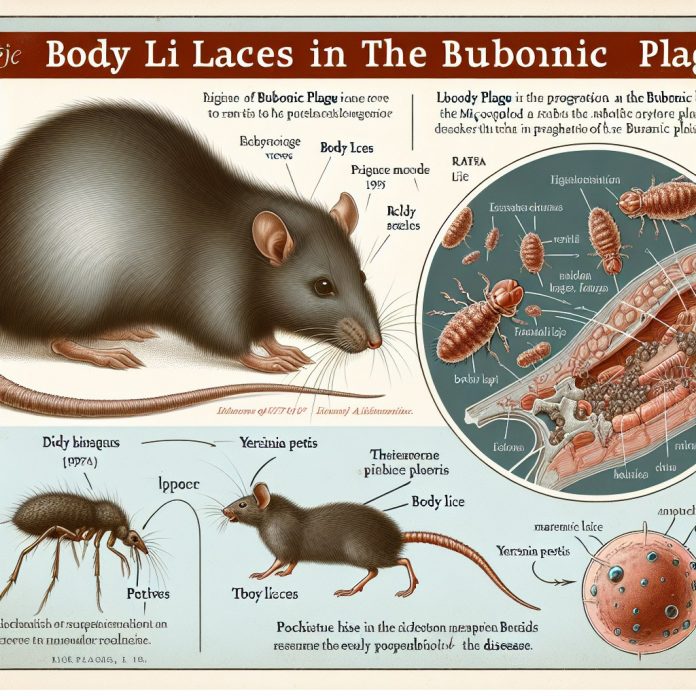
Body Lice: A Hidden Vector in the Spread of the Bubonic Plague
The bubonic plague pandemic of the 14th century, also known as the Black Death, is notorious for its devastating impact, claiming the lives of 25 million people in Europe. For centuries, scientists have attributed the rapid spread of this deadly disease to fleas carried by rats. However, new research suggests that body lice may have played a significant role in transmitting the bacterium Yersinia pestis, the causative agent of the plague.
Rethinking Plague Transmission: The Role of Body Lice 🪳
A study published in PLOS Biology has shed new light on the transmission mechanisms of Yersinia pestis. While rodent-borne fleas have long been considered the primary vectors of the plague, this research highlights the potential of body lice to transmit the disease more effectively than previously recognized.
Unlike head lice, which reside on human scalps, body lice inhabit the seams of clothing and bedding. They feed on human blood multiple times a day by hopping onto their hosts. This behavior makes them a potential vector for various diseases, including the bubonic plague.

The Study: Simulating Lice as Plague Vectors 🔬
To investigate the role of body lice in plague transmission, researchers used an artificial, skin-like membrane to simulate human skin. They conducted experiments to observe how effectively plague-infected lice could transmit the disease under different conditions.
In one scenario, lice were fed plague-infected human blood and then placed on the artificial skin to feed again, mimicking an outbreak where infected lice move from person to person. In another scenario, lice were fed infected blood and isolated for 18 hours before being allowed to feed again, simulating a situation where lice jump from clothing or bedding onto a human host.
Key Findings: Lice as Efficient Disease Carriers 📊
The results were striking. Up to 60% of the lice in both experimental groups remained infected with Yersinia pestis for a week. Moreover, all lice were capable of transmitting the disease. Lice that directly transferred from one host to another became infectious within just 24 hours of feeding on plague-infected blood.
Surprisingly, even lice whose feces showed no evidence of the plague bacterium were found to be infectious. Further experiments revealed that lice with infected Pawlowsky glands—glands in their heads associated with saliva secretion—routinely transmitted the plague at levels sufficient to infect humans.

Why Body Lice Might Be More Effective Vectors than Fleas 🩸
Body lice consume more blood than fleas, and human scratching can exacerbate the spread of infection. These factors, combined with the ability of lice with infected Pawlowsky glands to transmit sufficient bacteria to cause infection, suggest that body lice could be more efficient vectors of the plague than previously thought.
The researchers concluded that the role of body lice in plague transmission has been underestimated. Their findings indicate that these tiny creatures are likely “better vectors of plague bacilli than previously appreciated.”
Historical Implications: Revisiting the Spread of the Black Death 🏰
The revelation that body lice may have contributed significantly to the spread of the bubonic plague during the 14th century has profound implications for our understanding of historical pandemics. While rat-transmitted fleas undoubtedly played a crucial role, the involvement of body lice adds a new dimension to the story of the Black Death.
Conclusion: A New Perspective on Plague Vectors 🌍
The study underscores the importance of considering multiple vectors in the transmission of infectious diseases. As we continue to learn more about the mechanisms behind historical pandemics, this research prompts a reevaluation of the factors that contributed to the spread of the bubonic plague. Understanding the role of body lice in plague transmission not only enriches our historical knowledge but also informs modern public health strategies for preventing and controlling outbreaks of similar diseases.
In conclusion, while rats and their fleas have long been vilified as the primary culprits behind the Black Death, it’s essential to acknowledge the potential role of body lice. These findings highlight the complexity of disease transmission and the need for a multifaceted approach to studying and combating infectious diseases.




















